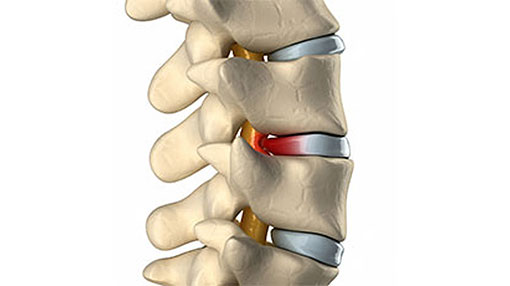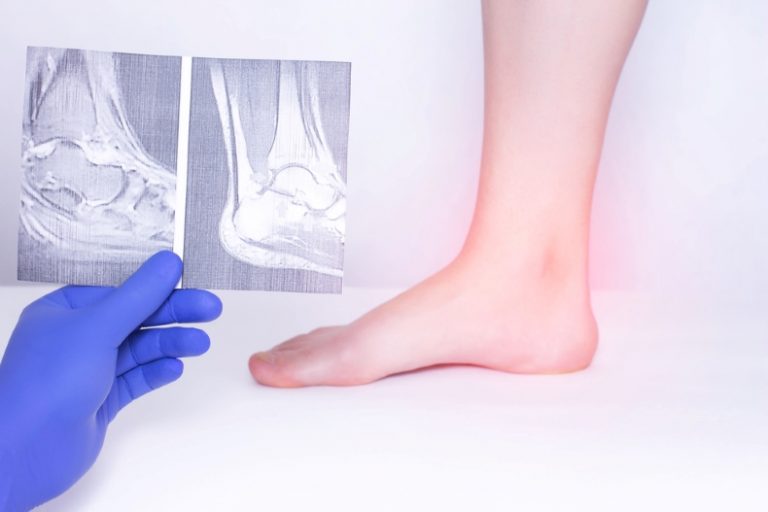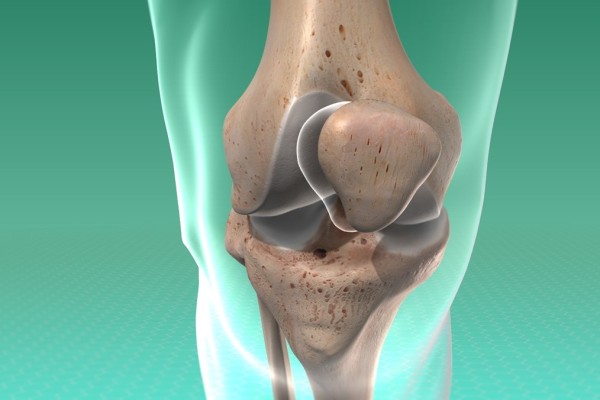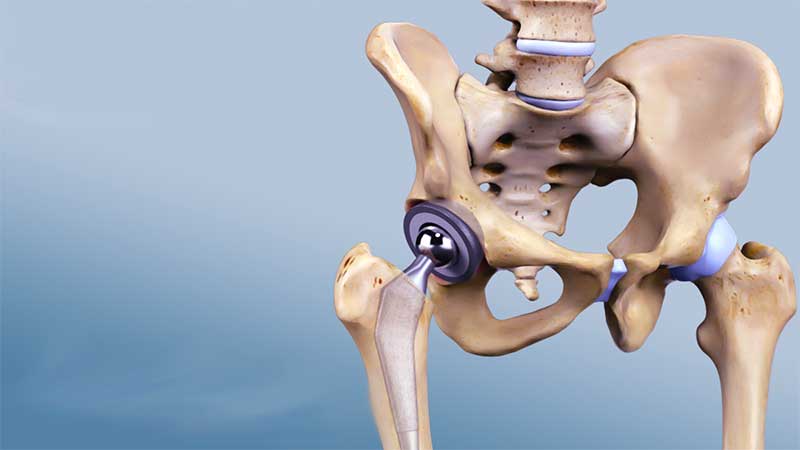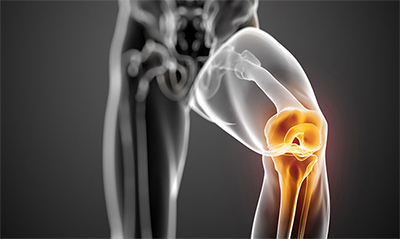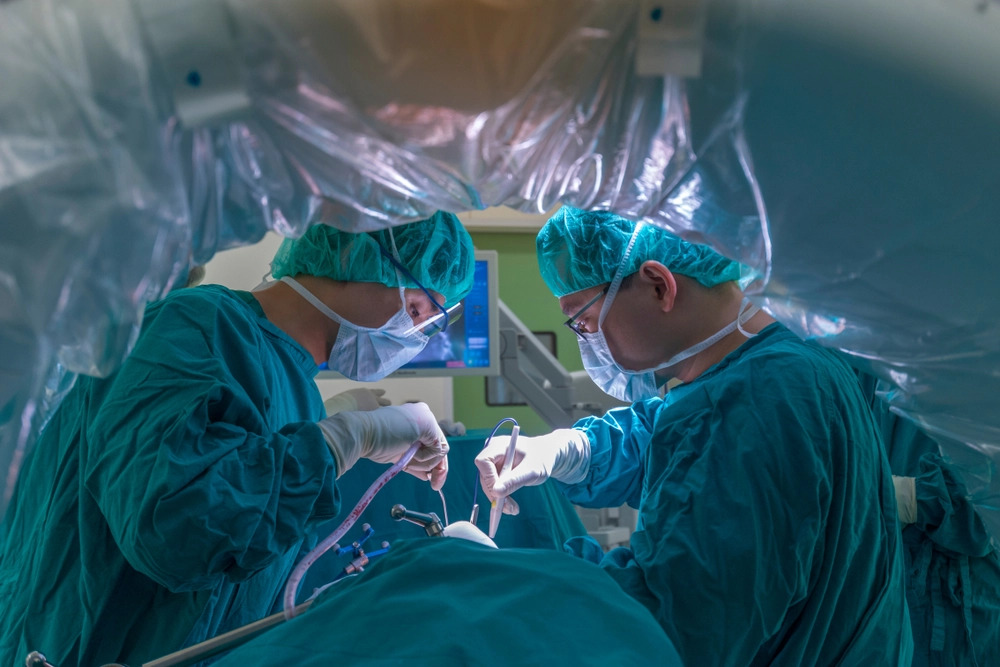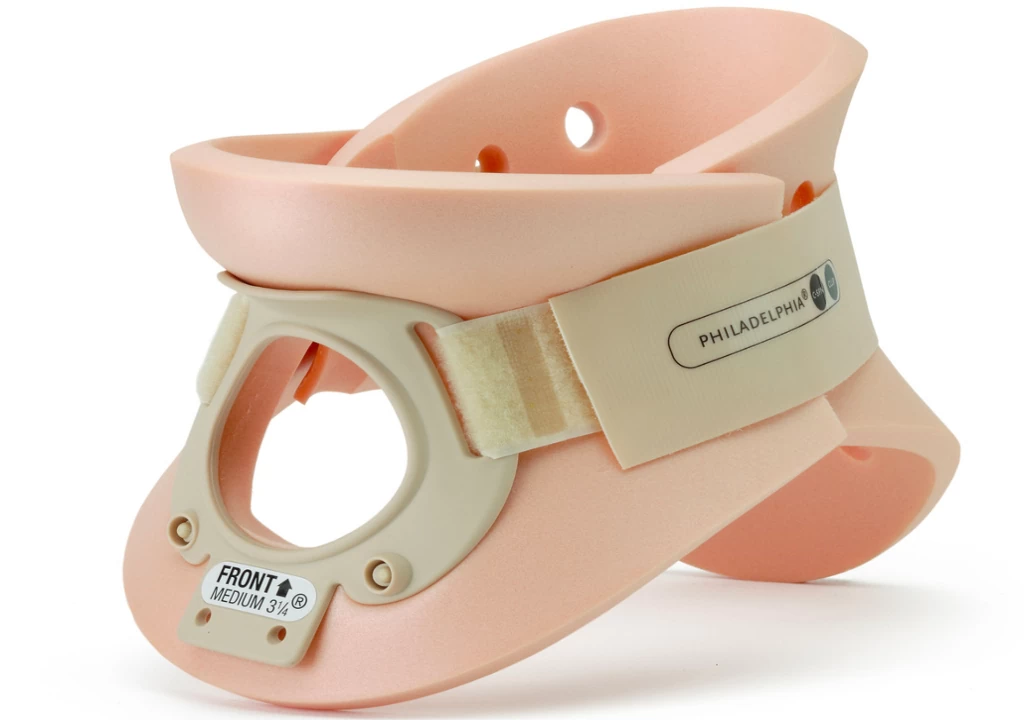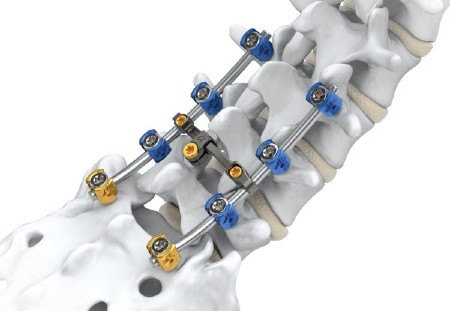! Learn About Cruciate Ligament Surgeries and Their Important Reasons
Cruciate Ligament Surgery The cruciate ligament is prone to many injuries, some of which are severe and require surgical intervention. In the following paragraphs, we will learn in detail about the main causes for undergoing the surgery, its results, and success rate, in addition to how the surgery is performed and the advice to follow afterward. So, stay tuned to get all the latest updates.
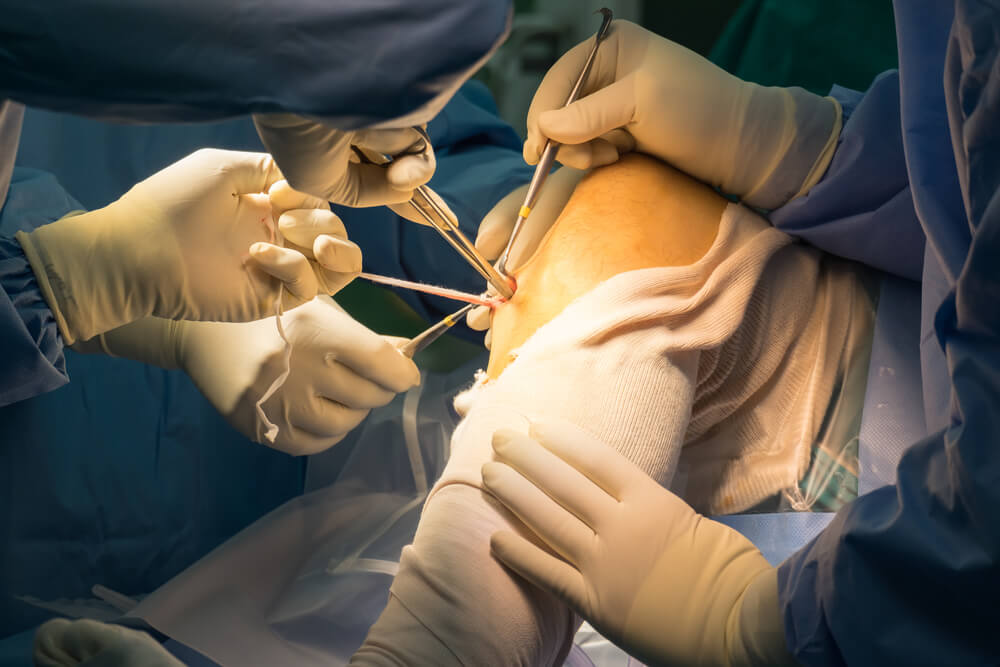
Cruciate Ligament Surgery
Cruciate ligament diagnosis and treatment surgeries are considered important surgical procedures in the field of sports medicine. Cruciate ligament tear may result from sports injuries, fall accidents, or body collisions. The tear is associated with symptoms such as pain, swelling, and impaired mobility.
The diagnosis of cruciate ligament tear involves examining the patient’s apparent condition and listening to the case history. However, the diagnosis is only confirmed through magnetic resonance imaging (MRI), which provides doctors with accurate images of the damaged ligament and surrounding joint inflammation.
Cruciate ligament repair surgery requires cutting the damaged ligament and reconstructing it. The surgeon secures the ligament ends, often using fixation materials such as screws or staples. After surgery, the patient is directed to an intensive rehabilitation program to regain mobility and strength in the injured knee. You can receive comprehensive and specialized care for cruciate ligament surgery with Dr. Amr Amal and enjoy an active and healthy life.
How long is the recovery period after cruciate ligament surgery?
The time required for rest and recovery after anterior cruciate ligament surgery varies according to each patient’s individual condition. The complete recovery of the cruciate ligament usually takes between 6-12 months. However, most patients can walk without assistance within 2-4 weeks after the surgery. At this stage, it is important to maintain short walking periods.
After about 6 weeks from the surgery, physical therapy should begin to help regain motion and muscle strength. Physical therapy focuses on improving knee balance and activating the surrounding muscles. When the patient can walk and run without any symptoms or problems, they can start practicing sports activities and return to normal daily activities.
It is worth noting that there may be some factors that affect the recovery period after cruciate ligament surgery. For example, more complicated cases may require a longer recovery time. Additionally, compliance with the doctor’s instructions and physical therapy affects the recovery speed. Therefore, it is essential to follow up with the specialist and adhere to all given instructions.
Are cruciate ligament surgeries successful?
The success rate of cruciate ligament surgeries depends on several factors. These factors include consulting a specialist in knee surgery and understanding the patient’s individual condition. Postoperative physical therapy is one of the important factors that may contribute to increasing the success rate of the surgery and promoting the healing process. Often, individuals suffering from cruciate ligament injury improve after receiving intensive physical therapy sessions.
The healing process from cruciate ligament surgery takes a long and varying time, depending on factors such as the severity of the injury, the strength of the surgery, and the patient’s adherence to the doctor’s instructions. Based on this, patients are advised to seek reliable information and consult their doctors before making any decision regarding undergoing cruciate ligament surgery. Benefit from the specialized consultation for cruciate ligament surgery with Dr. Amr Amal and prepare for physical improvement and development.
How many physical therapy sessions are required after cruciate ligament surgery?
When it comes to cruciate ligament treatment, it is recommended to visit a specialist to individually assess the condition. Several factors contribute to determining the number of physical therapy sessions required after cruciate ligament surgeries. These factors include the severity of the injury, the patient’s condition, and the specialist’s diagnosis.
Usually, the number of physical therapy sessions is determined between two sessions and several weeks or months. It is important to repeat physical therapy sessions regularly to achieve optimal results. The patient should consult their specialist to determine the most appropriate treatment program and ensure the continued benefit of physical therapy after cruciate ligament surgery.
If you would like to learn more about the duration of physical therapy after cruciate ligament surgery, click here.

Is there an alternative to cruciate ligament surgery?
When a person is diagnosed with an anterior cruciate ligament injury, one of the first concerns that arise is finding an alternative to cruciate ligament surgery. But is there really an alternative to this surgery? The injured person wonders and searches for accurate and correct information on this matter.
Research indicates that there are two main ways to treat the cruciate ligament: conservative and surgical treatment. The choice of the appropriate method depends on the patient’s condition and the recommendation of the specialist doctors.
In conservative treatment, the muscles surrounding the knee are strengthened, and the tendon strength is improved to support the knee, reduce pain, and swelling. Although this treatment may be effective in some mild cases, it is not a complete alternative to surgery. As for surgical treatment, it involves reconstructing the cruciate ligament using a graft taken from another source in the body and transplanting it to replace the damaged ligament. This is followed by an intensive rehabilitation process to regain strength and knee stability.
Book your appointment now with Dr. Amr Amal to benefit from the innovative treatment for cruciate ligament surgery and improve your quality of life.
What is cruciate ligament surgery?
Cruciate ligament surgery is a surgical procedure used to repair a torn anterior cruciate ligament in the knee. This procedure requires guiding a needle toward the joint to take a sample of fat cells for use in reconstructing the damaged ligament. This surgery relies on general anesthesia to ensure the patient’s comfort and facilitate access to the knee.
Initially, the damaged tissues are removed, and the ligament is temporarily reconstructed using wires or screws to mimic the function of the damaged ligament. Then, the tissue taken from the fat is used to reconstruct the torn anterior cruciate ligament. The new ligament is secured in place using pins or fixation tapes.
Anterior cruciate ligament reconstruction surgery is an effective surgical procedure for treating anterior cruciate ligament tear, promoting the recovery of normal knee motion, and reducing pain and swelling. This surgery requires discipline and commitment from the patient in following appropriate rehabilitation programs after the surgery to ensure successful healing and restore the functional ability of the knee.
Learn about the available options for cruciate ligament surgery and benefit from Dr. Amr Amal’s expertise in this field.
Reasons for undergoing cruciate ligament surgery
Some people may need to undergo cruciate ligament surgery in the knee for several reasons. Here are the main reasons that may warrant this surgery:
- Anterior cruciate ligament tear:
A tear in the anterior cruciate ligament can occur due to sports injuries, such as playing soccer or basketball, or even a car accident. A torn ligament affects knee stability and can cause severe pain and inability to move normally. To learn more about treating an anterior cruciate ligament tear click here. - Non-responsive to conservative treatment:
Before the doctor resorts to cruciate ligament surgery, conservative treatment is first attempted. If the injury is severe and cannot be treated conservatively, the doctor may suggest surgery as a better option to restore knee function. - Need to restore athletic performance:
For professional and even amateur athletes, restoring athletic performance may be essential after a cruciate ligament injury. Undergoing surgery helps protect the knee, strengthen the ligament, and thus improve athletic performance. - Protect the knee cartilage:
When the cruciate ligament is torn, the unstable movement of the shin bone can cause irregular movement of the cartilage in the knee. Undergoing cruciate ligament surgery helps reduce this unstable movement and limit cartilage damage. - Avoid the development of other problems:
Failure to undergo cruciate ligament surgery at the appropriate time may lead to the development of other knee problems, such as joint erosion, cartilage surface tearing, and bone deformities. Early surgery helps prevent the development of these problems and improve treatment outcomes.
In general, patients suffering from cruciate ligament tears should consult with their doctors to determine if surgery is necessary to address their specific condition. This will help them restore knee condition and improve their long-term quality of life.
Mechanism of cruciate ligament surgery
Anterior cruciate ligament replacement surgery is a surgical procedure performed to treat a torn anterior cruciate ligament in the joint, which works to stabilize the joint and maintain its stability. Anterior cruciate ligament injuries are common among athletes and also in individuals suffering from cumulative or accident-related injuries.
The cruciate ligament replacement surgery begins by carefully removing the torn ligament. It is then replaced with another tendon from the knee area, which is firmly secured to ensure joint stability. The surgery is typically performed using arthroscopic surgery, which helps minimize surgical intervention and potential side effects.
After the surgery, the patient needs a period of recovery and physical rehabilitation for complete healing. This depends on the patient’s condition and complexity, and recovery usually takes between 6 to 12 months. Physical therapy helps restore normal knee motion and strengthen the surrounding muscles. You can enjoy comfort and better performance thanks to the advanced cruciate ligament surgery provided by Dr. Amr Amal.
Advice after cruciate ligament surgery
After undergoing cruciate ligament surgery, there are some important tips that the patient must follow to ensure proper healing. Here is a list of essential advice after the surgery:
- Follow the doctor’s instructions: This is the most important advice after cruciate ligament surgery. The patient must adhere to the doctor’s instructions completely, whether regarding medication or required daily practices.
- Elevate the leg carefully: The patient should elevate their leg, keeping the knee elevated above heart level. This will help reduce swelling and alleviate pain.
- Take pain medications and anti-inflammatory drugs: Doctors may prescribe some medications for the patient to relieve pain, reduce inflammation, and swelling.
- Get proper nutrition: Eating a healthy and balanced diet may help promote the healing process and improve overall body health. The patient’s diet should include fruits, vegetables, and healthy proteins.
- Get adequate sleep: The patient should get enough sleep to promote healing. It is preferable to sleep on one side with a pillow under the leg for support.
- Control weight: The patient should maintain a healthy weight, as excess weight puts a strain on the injured knee and may hinder the healing process.
Patients can attend therapy sessions to rehabilitate the knee and strengthen the surrounding muscles after the surgery. They should regularly consult their doctors to monitor progress and ensure the knee’s return to normal condition. To learn more about rehabilitation after cruciate ligament surgery, we recommend this article.
Risks of cruciate ligament surgery
Cruciate ligament repair surgery is a common and effective surgical procedure for treating chronic cruciate ligament injuries. However, patients considering this surgery should be aware of some potential risks. In this article, we will discuss some common risks that may arise from cruciate ligament surgery, including:
- Infection or inflammation: Infection is one of the most significant risks that may occur after cruciate ligament surgery. A joint infection can lead to swelling, pain, and fever, and in some cases, may require joint replacement with an artificial joint.
- Blood clots: The risk of blood clots may increase after undergoing cruciate ligament surgery. The likelihood of developing leg blood clots may increase after the surgery, increasing the risk of blood clots in the blood vessels.
- Nerve damage: Damage to the nerves and surrounding blood vessels around the knee can occur during cruciate ligament surgery. This may result in numbness or weakness in the leg, and it may take a long time to regain normal leg motion and function.
- Knee asymmetry: Length asymmetry between the knees may occur due to cruciate ligament surgery. The patient may need adjustments during the post-treatment phase to equalize the length between the knees and achieve optimal balance for effort and movement.
- Joint stiffness: In rare cases, joint stiffness may occur due to blood clots or fluid buildup within the knee after cruciate ligament surgery. This can reduce joint motion and increase pain and swelling.
- Discomfort or persistent pain: The surgery may be accompanied by severe discomfort or persistent pain during the knee healing period. Pain management may be needed to alleviate the symptoms and facilitate the recovery process.
Benefit from Dr. Amr Amal’s extensive experience in treating cruciate ligament surgery and achieving optimal results. If you would like to learn more about the risks of cruciate ligament surgery, you can read the following article.

Best doctor for cruciate ligament surgeries in Egypt
Dr. Amr Amal is one of the best orthopedic surgeons in Egypt. Dr. Amr Amal is an expert in performing cruciate ligament surgeries and has an impressive track record of success in this field.
Dr. Amr Amal is distinguished by his extensive experience in the field of orthopedic and joint surgery, utilizing the latest medical techniques and tools for diagnosing and treating bone, joint, and surrounding tissue injuries. With his exceptional expertise in cruciate ligament surgery, Dr. Amr Amal is considered one of the eminent and renowned specialists in this field.
Dr. Amr Amal has performed numerous successful surgeries in this area, including bone fractures, hip joint replacements, and various other bone injuries. Dr. Amr Amal is known for his precision and dedication to his work, always striving to provide the highest quality healthcare to his patients.
As an outstanding surgeon in the field of orthopedic and joint surgery, Dr. Amr Amal enjoys an excellent reputation and is highly regarded in the medical community and among patients alike. Dr. Amr Amal focuses on providing comprehensive care to patients, starting from diagnosis to post-surgery stages.
Cruciate ligament surgeries are delicate and complex procedures, and patients need a qualified and highly experienced surgeon in this field. With Dr. Amr Amal’s expertise and exceptional skills, he is an excellent choice for those seeking a specialized orthopedic and joint surgeon for cruciate ligament procedures.
Additionally, Dr. Amr Amal is known for his integrative consultative approach, treating patients with kindness and care. Patients feel comfortable and confident in his ability to provide them with optimal medical care.
In summary, Dr. Amr Amal is one of the best orthopedic surgeons in Egypt, particularly in the field of cruciate ligament procedures. With his extensive knowledge and professional expertise, Dr. Amr Amal provides exceptional and comprehensive medical care to his patients in Nasr City.

